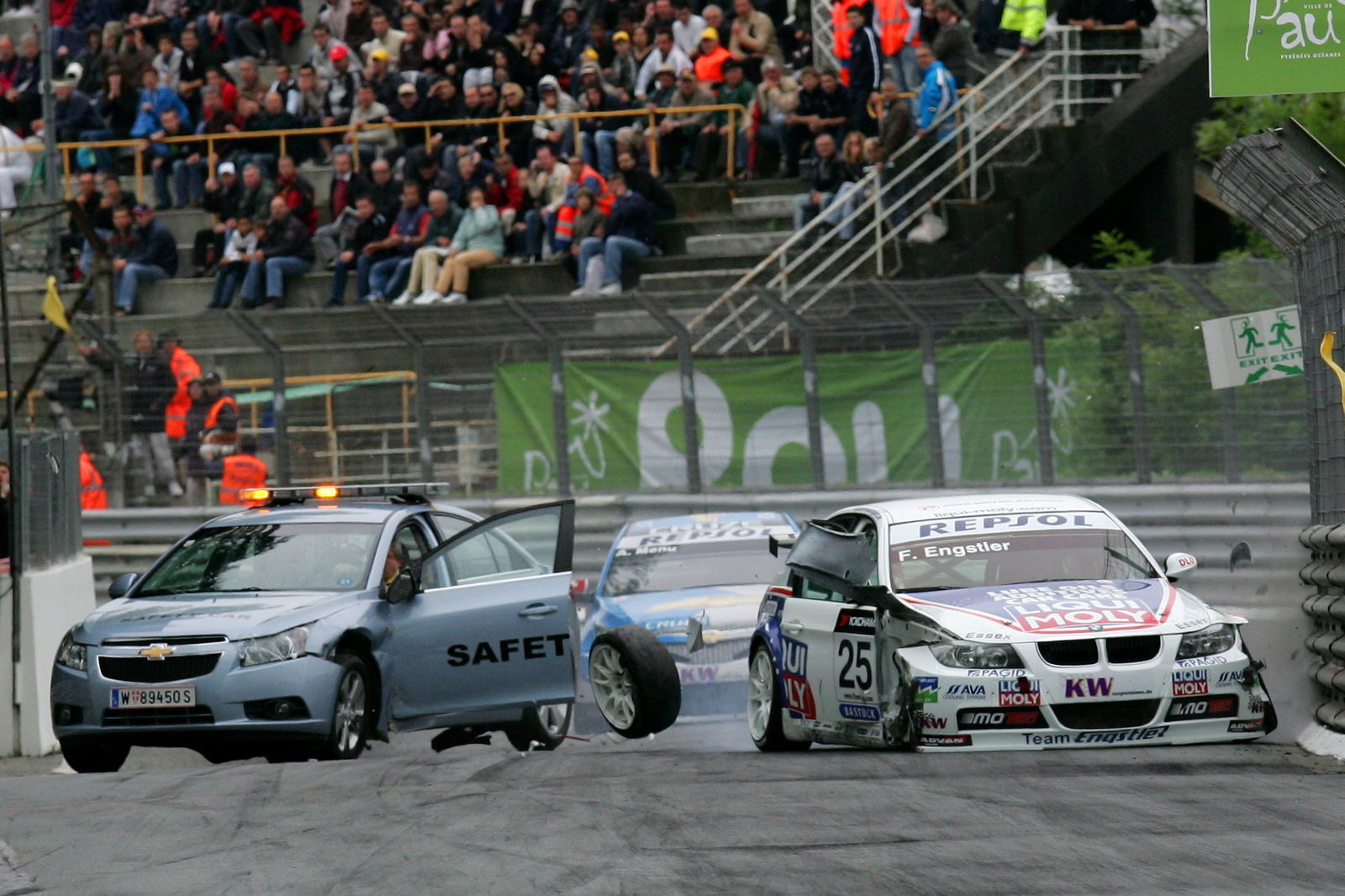Why Racing Drivers Shouldn't Be Allowed To Touch Our Road Cars
 Not a suggestive picture at all. Oh no.
Not a suggestive picture at all. Oh no.Every time I read an appraisal arguing why the Honda NSX is the best Japanese car ever - the first usable supercar - and the best thing to come out of Japan since Bulbasaur and Squirtle, I wince. Sooner or later, you’re going to read the S-word. Long before the 3.0-litre VTEC V6 kicks in (yo), it’s impossible to resist noting the Senna connection.
 'It as, 'ow you say, VTEC, yo? And shit plastics'
'It as, 'ow you say, VTEC, yo? And shit plastics'If you’re Honda, or a Honda fanboy, you’d want to play up the fact that the greatest talent ever to introduce arse to F1 seat tuned your only supercar. But for the rest of us, good as the NSX is, the Senna connection is over-egging the car’s myth. Yes, it showed Ferrari that emotional cars could be reliable, and showed Porsche that reliable cars could be emotional. But it’s mainly a wedge with a V6 and 276 horses. Let’s get some perspective here. And no, I don't know why he's driving an auto in the archive image above, either. Scandalous.
 'Of course I'm grinning. I used to drive for Honda'
'Of course I'm grinning. I used to drive for Honda'In truth, racing drivers shouldn’t really be allowed anywhere near road car development. Marketing types get a semi for the whole idea, but who else cares? First off, not the drivers. Ask any racing driver what they reckon about the road cars they're supposed to be endorsing, and on the whole, they’re none too impressed. Lewis Hamilton admitted in an interview with CAR earlier this year ‘I hate driving on the road. You drive.’ Damon Hill bought an Audi A3 when he retired, not a Lamborghini Diablo. Why? Because no road car can ever match the response of a racing car.
 'Scheiße, Herr Newey really dropped the ball with this season's car...'
'Scheiße, Herr Newey really dropped the ball with this season's car...'Infiniti is getting away with murder at this game. Thanks to a tenuous link with Red Bull’s engine suppliers, it’s got its name on the side of the RB9, and employed Seb Vettel as its ‘Director of Performance’. Apparently he’ll set up all future Infinitis to his own taste, including the new Q30, which is a hatchback crossover based on a Mercedes A-class hatchback. I bet Pointy Finger’s excited about that day at the office...
 'Can you imagine if I had to drive these posh Nissans as part of my contract?! ... Guys? Guys..?'
'Can you imagine if I had to drive these posh Nissans as part of my contract?! ... Guys? Guys..?'McLaren’s entire development of the 12C was riddled with shots of Jenson and Lewis hooning it, and while even drivers as talented and fast as they are doubtless get a kick out of a 592bhp supercar, I simply don’t believe their input was crucial to making the car handle as well as it does. An outfit like McLaren has plenty of world class technicians, aerodynamicists and drivers at its disposal, and it’s almost unfair to hand so much credit to two headline acts. I seem to remember that McLaren set the distance between the 12C steering wheel’s thumbrest and the paddleshifter to be identical to Lewis’s then F1 racer. Either that’s exquisite attention to detail or insanely anal.
 'Received your cheque yet?' 'Nope. Why is your suit made out of Golf GTI seats?'
'Received your cheque yet?' 'Nope. Why is your suit made out of Golf GTI seats?'Meanwhile, Porsche knocks out great after great: GT3, GT2, RS, Cayman, Boxster... all without so much of a whiff of a walking, talking (well, muttering) flameproof billboard telling the Stuttgart boys how to set their dampers and style their handbrake stitching. Did Ken Block help sort the awesome Fiesta ST after his Gymkhana exploits? Thought not.
 'I don't always develop road cars, but when I do, I demand a sewer full of girls and cocaine.'
'I don't always develop road cars, but when I do, I demand a sewer full of girls and cocaine.'I don’t doubt for a second that cars developed with the help of racing drivers have turned out to be amazing. Schumacher’s Ferrari Enzo, 430 Scuderia, and FXX, stand out as all-time greats. Drift King Keiichi Tsuchiya was a top consultant for the Toyota GT86/Subaru BRZ/Scion FR-S sports coupe project. And Fernando Alonso looks like he’s having a blast advertis-.... sorry, developing LaFerrari. Though if it was his idea to give a road car a square steering wheel, he needs to be reassigned immediately.
Just don’t try and tell me those cars wouldn’t be half as respected if they hadn’t had dynamics input from a chap handier than most with a set of pedals and a steering wheel.

Comments